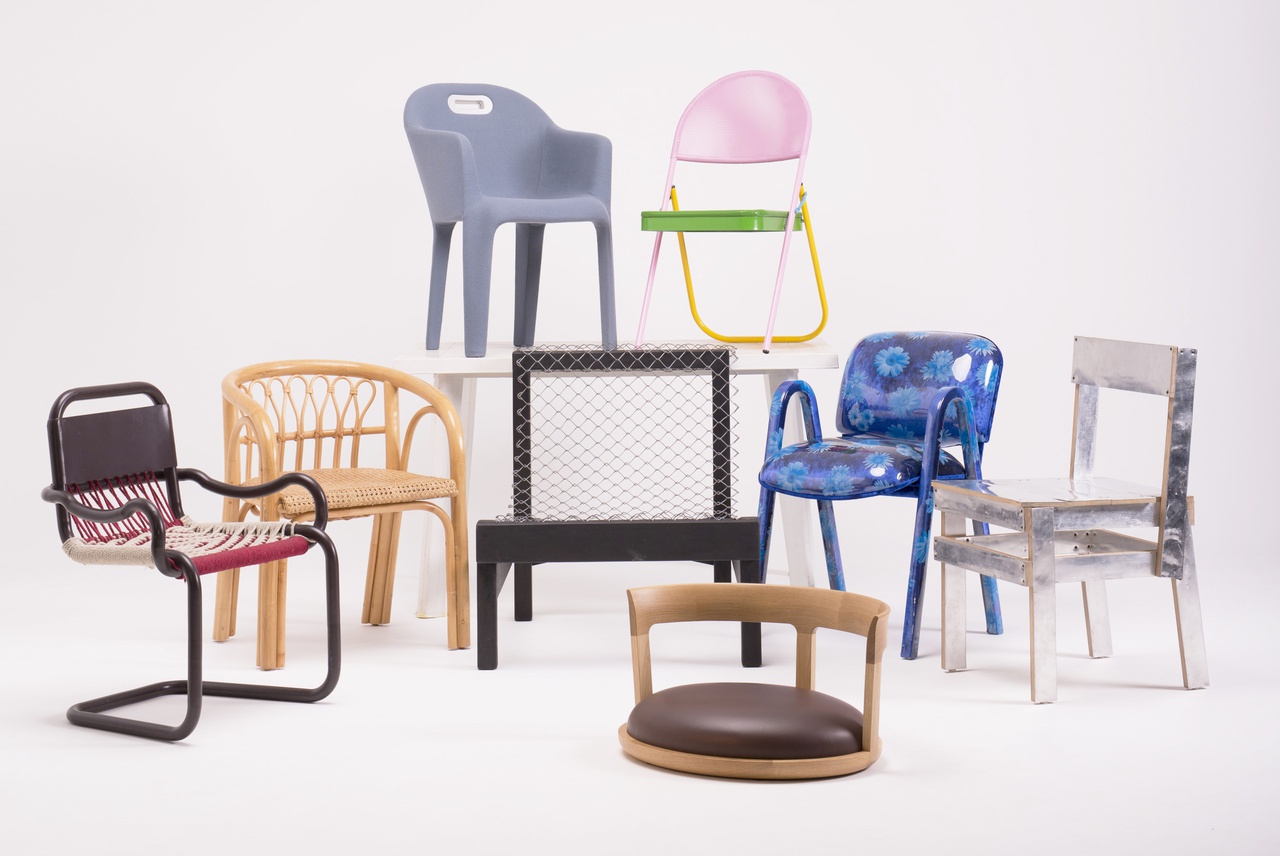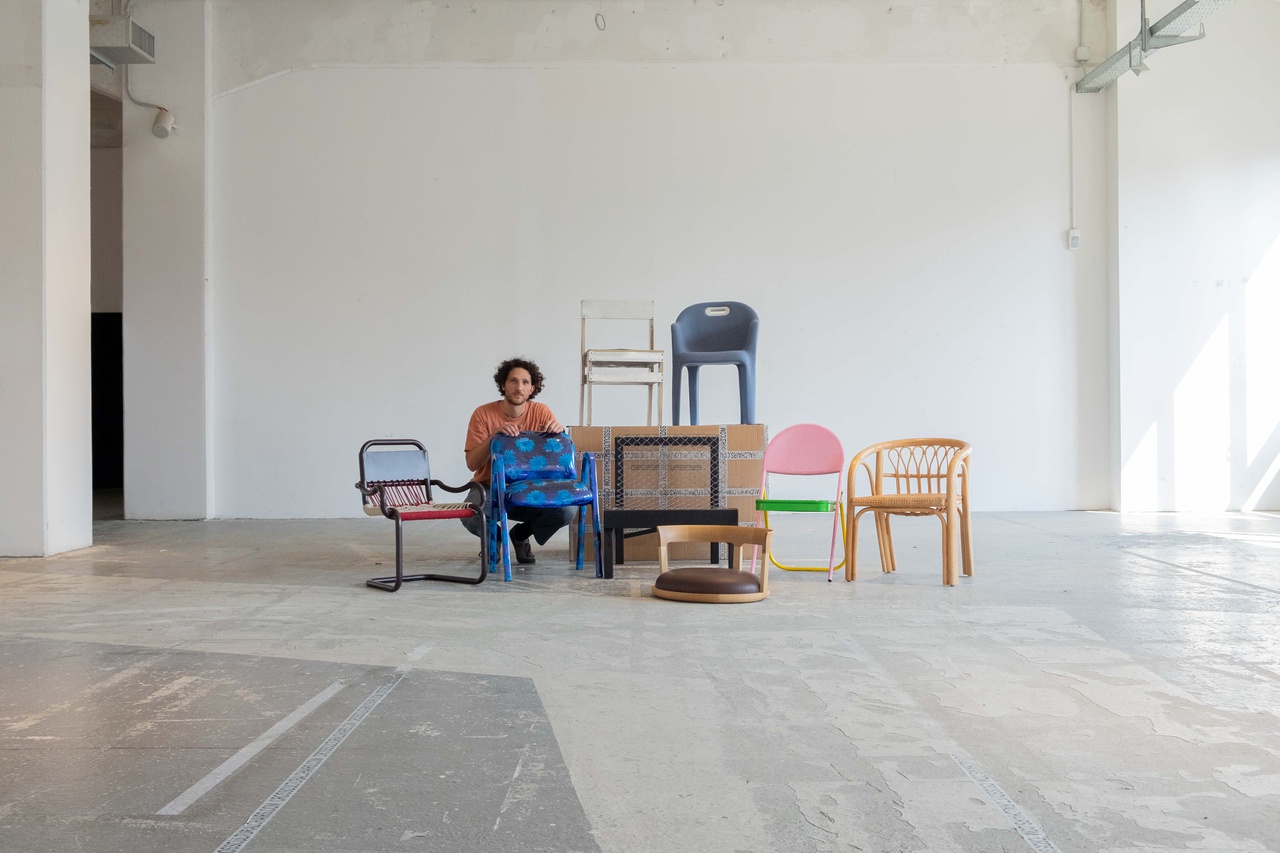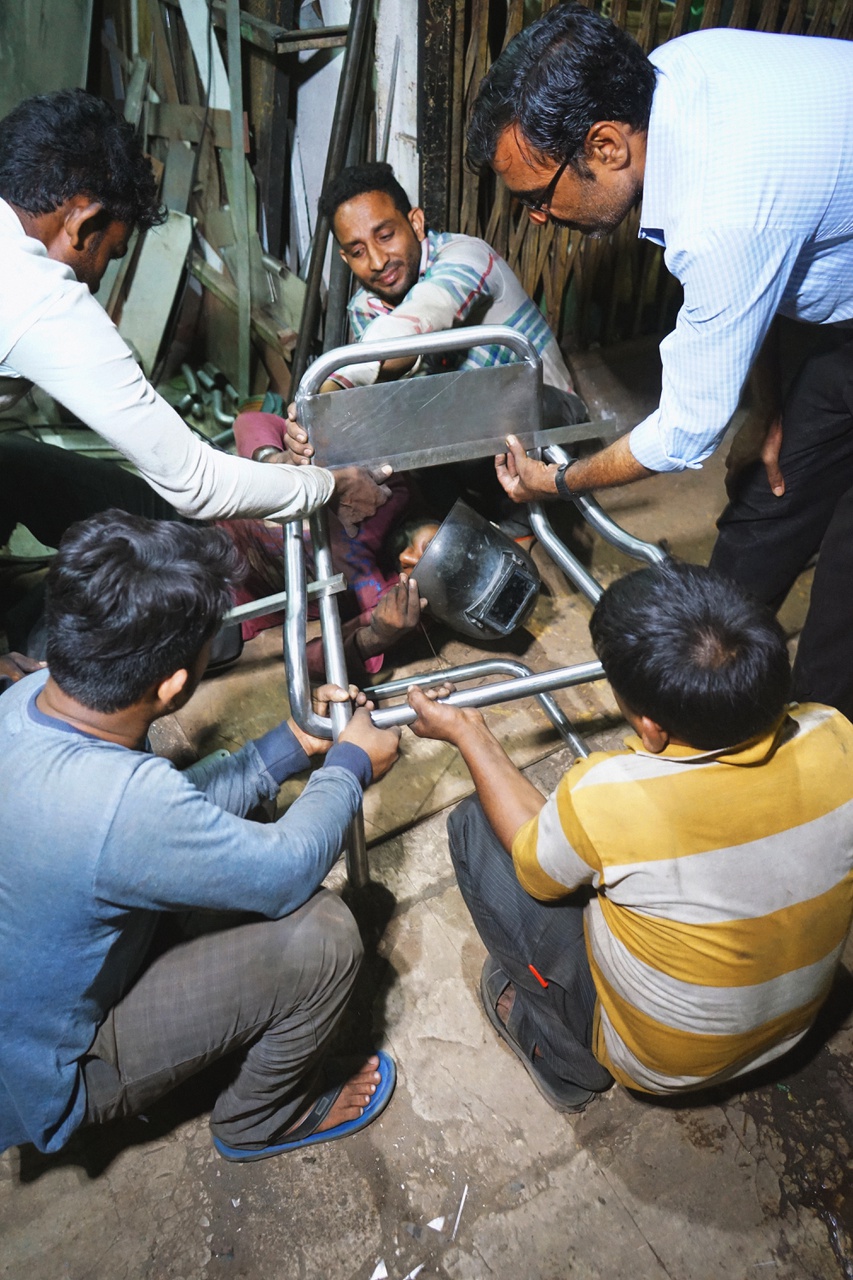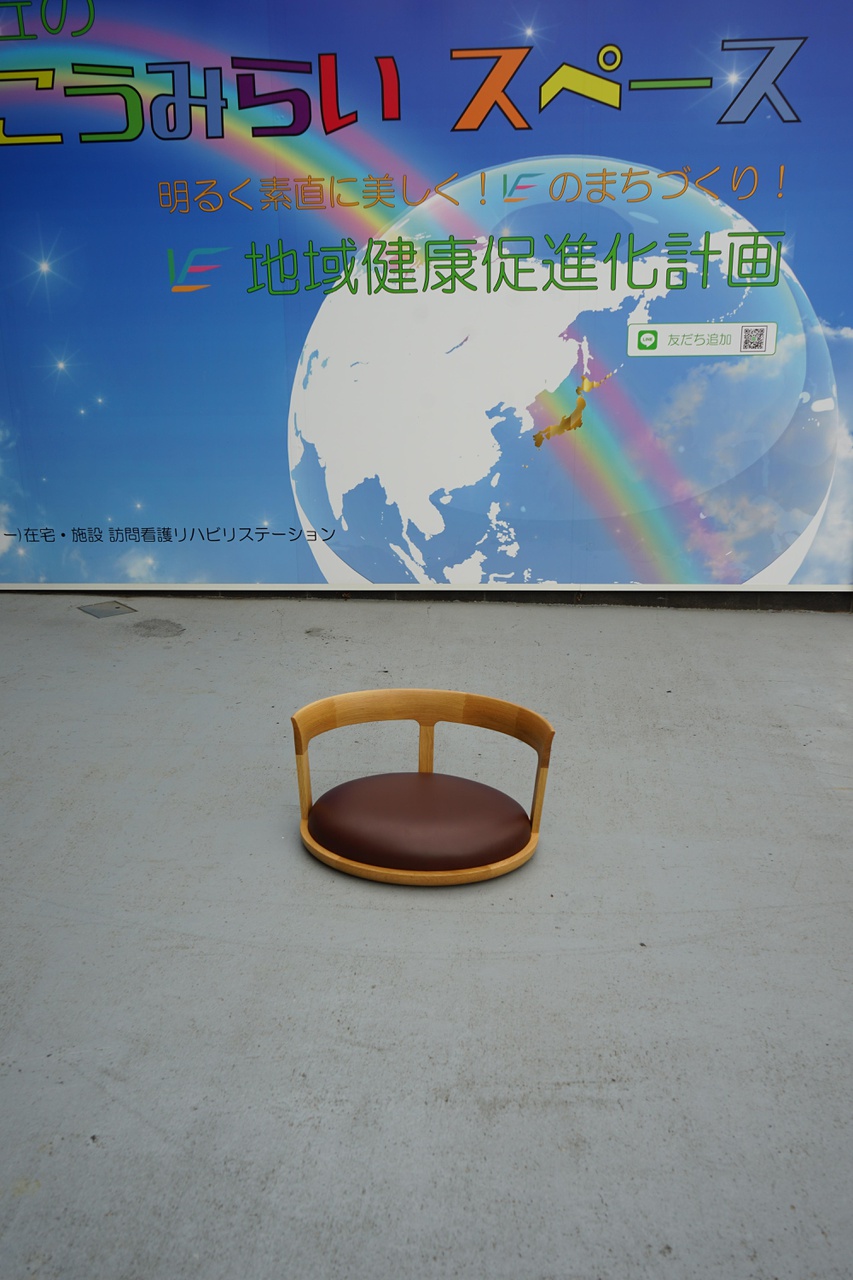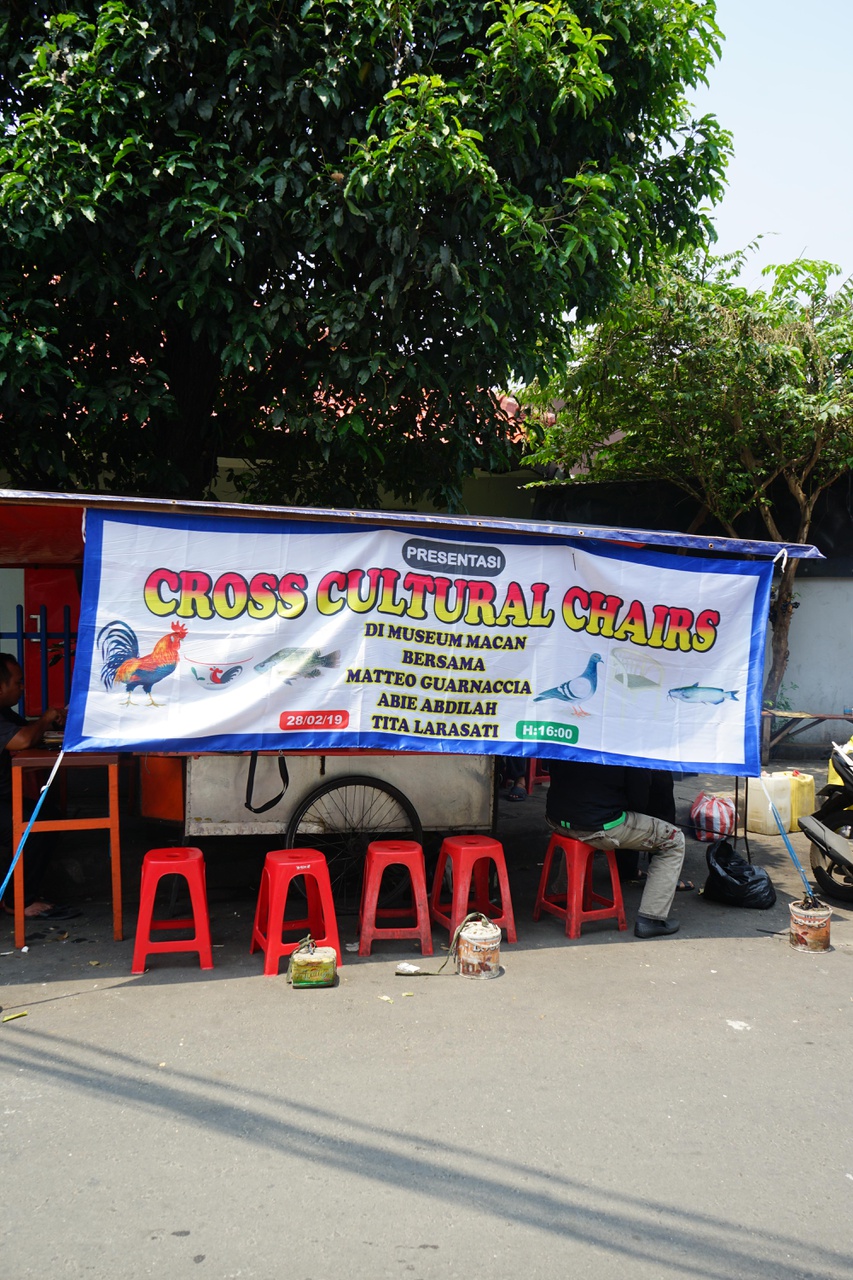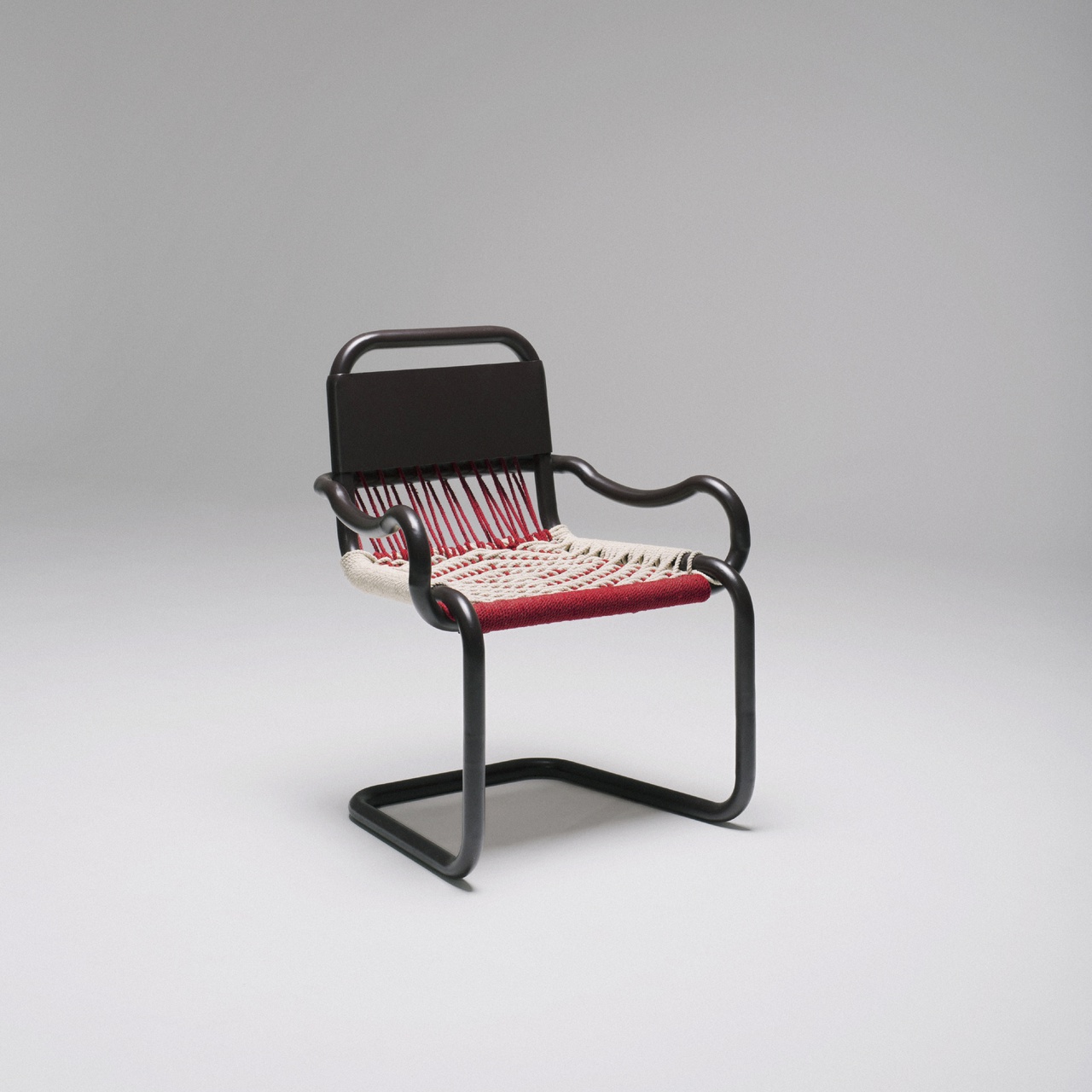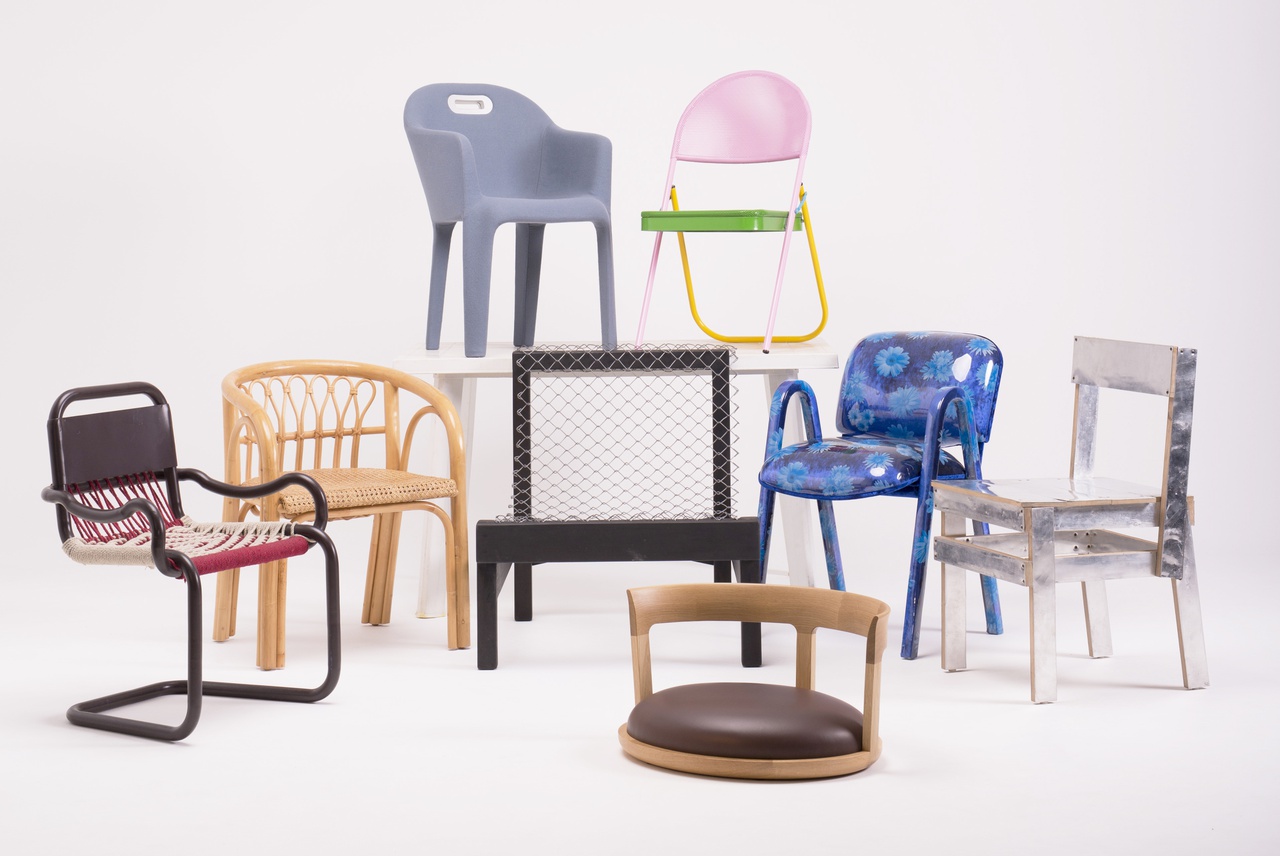Can you portray a country through a chair? Sicilian designer Matteo Guarnaccia undertook a surprising attempt with his project Cross Cultural Chairs. He travelled around the world's eight most densely populated regions and returned with eight different chairs. He incorporated the history, ideas, habits and conventions of the inhabitants of the different countries. By producing the chairs on site, he worked with local craftsmen, materials and production methods. The result is a unique series of chairs that is not only about design but above all about people. This extraordinary series was recently acquired by the Centraal Museum.
Seating behaviour
Are you reading this while sitting on a chair? Then you are probably in a Western country. But are you squatting or sitting cross-legged? Then it is more likely that, relative to the Netherlands, you are somewhere east of the world.
This is how Guarnaccia begins his story on how our (sitting) behaviour is determined by the culture that surrounds us. The way of sitting has numerous practical consequences. If you sit in a cross-legged position, then you are probably also wearing comfortable clothes. And if you sit low to the ground, then the rest of the interior is also adjusted accordingly. Guarnaccia is interested in how socio-cultural differences influence the design of utilitarian objects. And what object is closer to people than a chair?
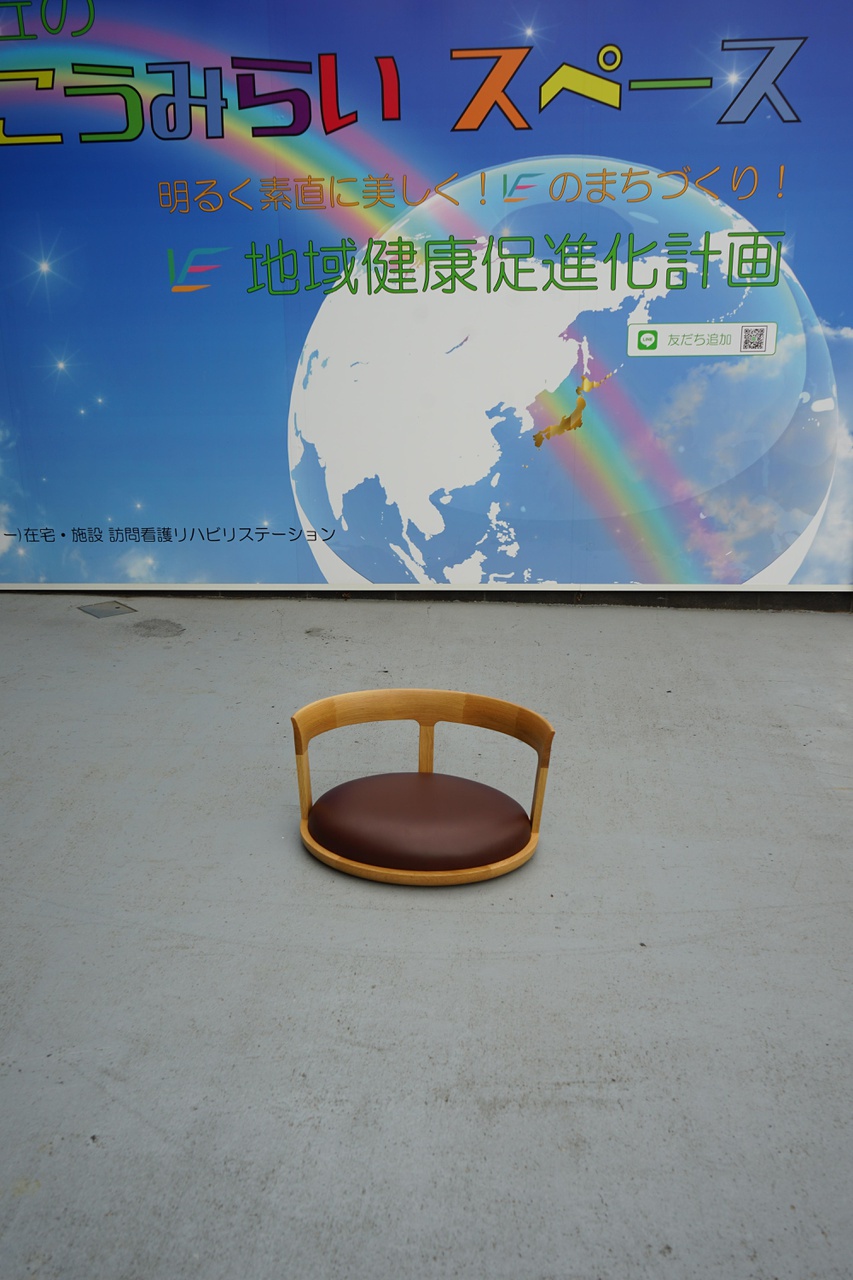
Culture defines form of the chair
Guarnaccia started in Brazil and travelled consequently to Mexico, Japan, Indonesia, China, India, Russia and Nigeria. He had one important rule: he stayed in each country for exactly one month. During that period, the chair had to be designed as well as executed. Upon arrival, he therefore traversed metropolises and villages at lightning speed, visiting markets and museums. He discussed - sometimes tooth and nail - with the inhabitants about their customs and habits, local politics and history. This provided him with a picture of the country's culture in a short time; though in full awareness of his limited vision as a (Western) outsider. Working with local designers, he then translated that image into a design. This was to lead to an actual chair that same month, including a photo-shoot and presentation. On the first day of the following month, the designer flew on to his next destination. After eight intensive months, he returned with eight different chairs, each a portrait of a country.
Beach chairs and ice cubes
Guarnaccia documented his project in a video report and he wrote a book about it. So you can travel with him while reading and watching: in the metro, out of a taxi. You sit at producers' tables and watch the local blacksmith, as it were. While smelling, tasting and wandering, you follow the designer through remote neighbourhoods. He has an eye for the most trivial seeming details. For instance, you learn that the price of beach chairs in Ipanema in Brazil increases proportionally to the number of ice cubes that keep drinks cool. And that in Lagos you spend an average of 30 hours a week sitting (!) in traffic or that Russians love coloured plastic flowers to get through the grey winter.
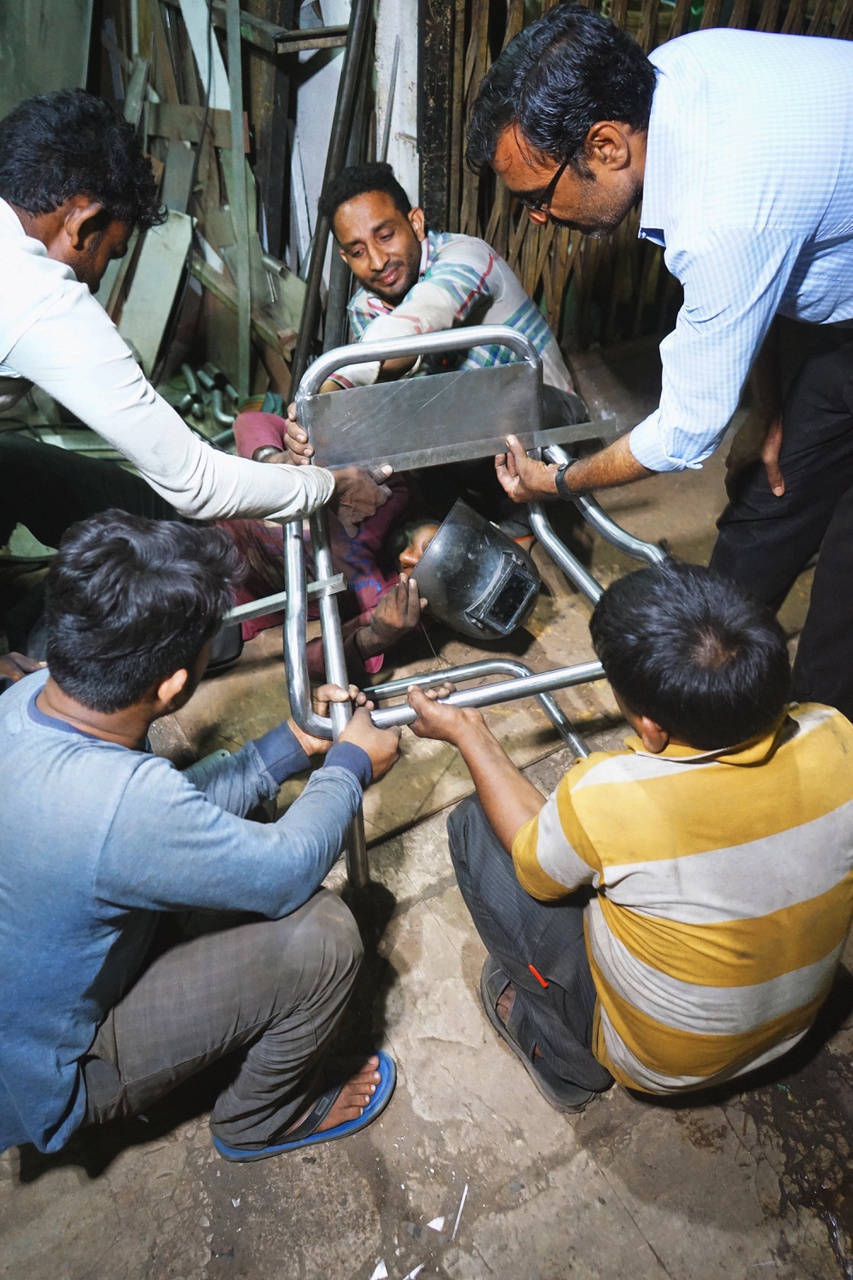
Guarnaccia's visits to artisans and producers also provided interesting insights. After each production, the designer gained more knowledge but there was never a blueprint. After all, every country has its own manners, time is an elastic concept and a drawing is not interpreted the same way all over the world – and sometimes it even drove the designer to despair.
India
In each country, Guarnaccia asked everyone he met what he thought was the most typical chair for the country. For instance, in India - where the chair was only introduced by the British - he stumbled across one by Indian manufacturer Godrej and Boyce. This turned out to be inspired by a tubular steel chair by German designer Marcel Breuer, from whom Centraal Museum also has a number of chairs in its collection. Guarnaccia incorporated his observation that many Indians sit with one raised knee by adding a curve in the armrest that makes this position more comfortable. This makes the chair a cross between Indian tailoring and Western sitting. For the seating surface, Guarnaccia used the knotwork of an ancient Indian lounge bed (charpai). The chair was made in collaboration with Indian designers Sameep Padora and Ajay Shah.
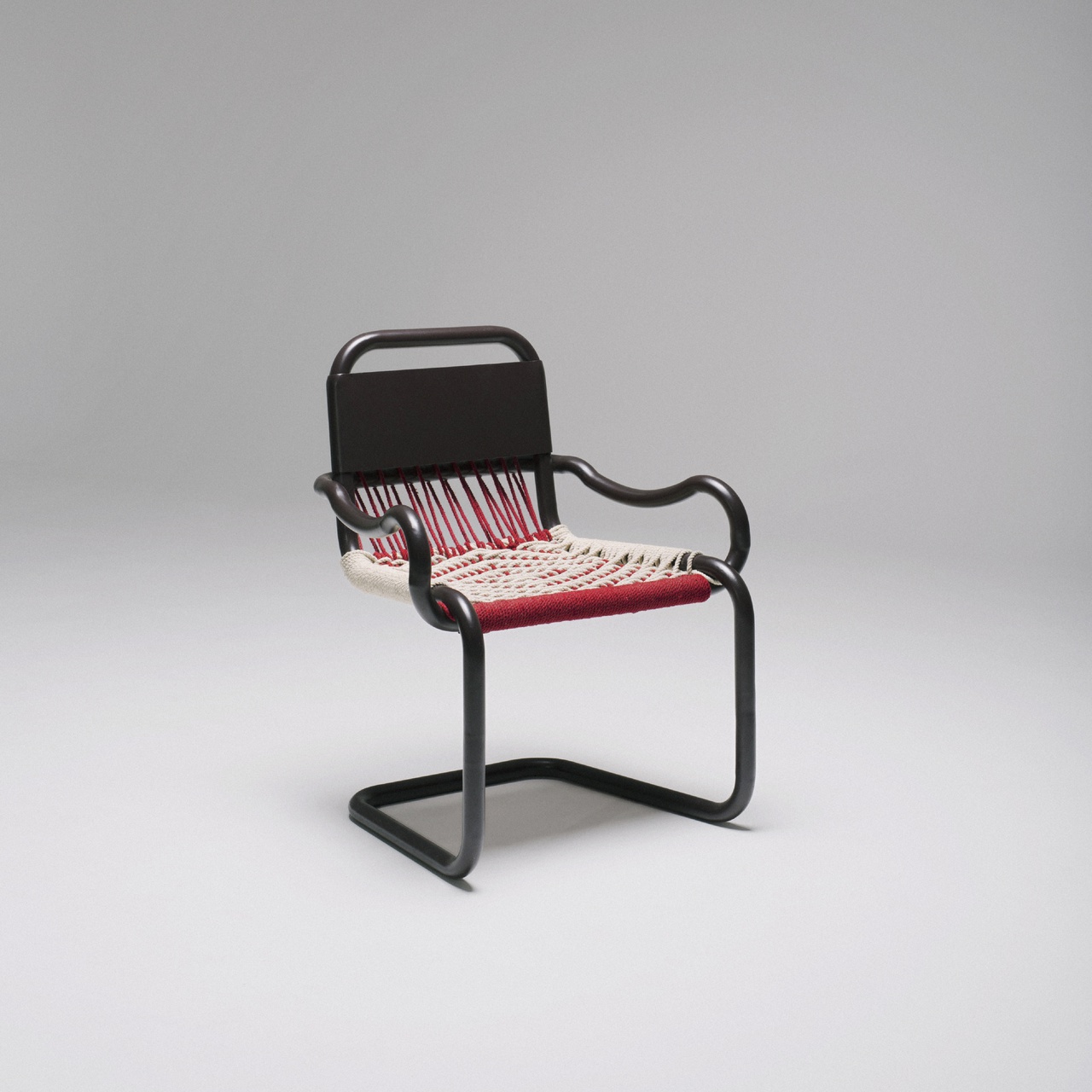
Brazil
The use of warm materials such as wood and leather are typical of Brazilian design. The name Brazil even traces back to the national tree, the pau-brasil. In this chair, the leather has been replaced by an uncomfortable seat made of woven mesh fencing. This refers to the policy and military stance of Brazilian President Jair Bolsonaro, who has taken office since 2019. As president, critics say he would only bring discomfort to the country.
In the end, Guarnaccia succeeds in combining stereotypes and his own unique perspective to create a new and surprising piece of furniture each and every time. Each chair has its own story. For the photo shoot of the chairs - for which he approached local photographers - he devised a means that is as simple as it is effective. To maintain unity around the widely divergent locations, he used a characteristic piece of fabric as a backdrop each time. The fabric is often held by people who were involved in the project.
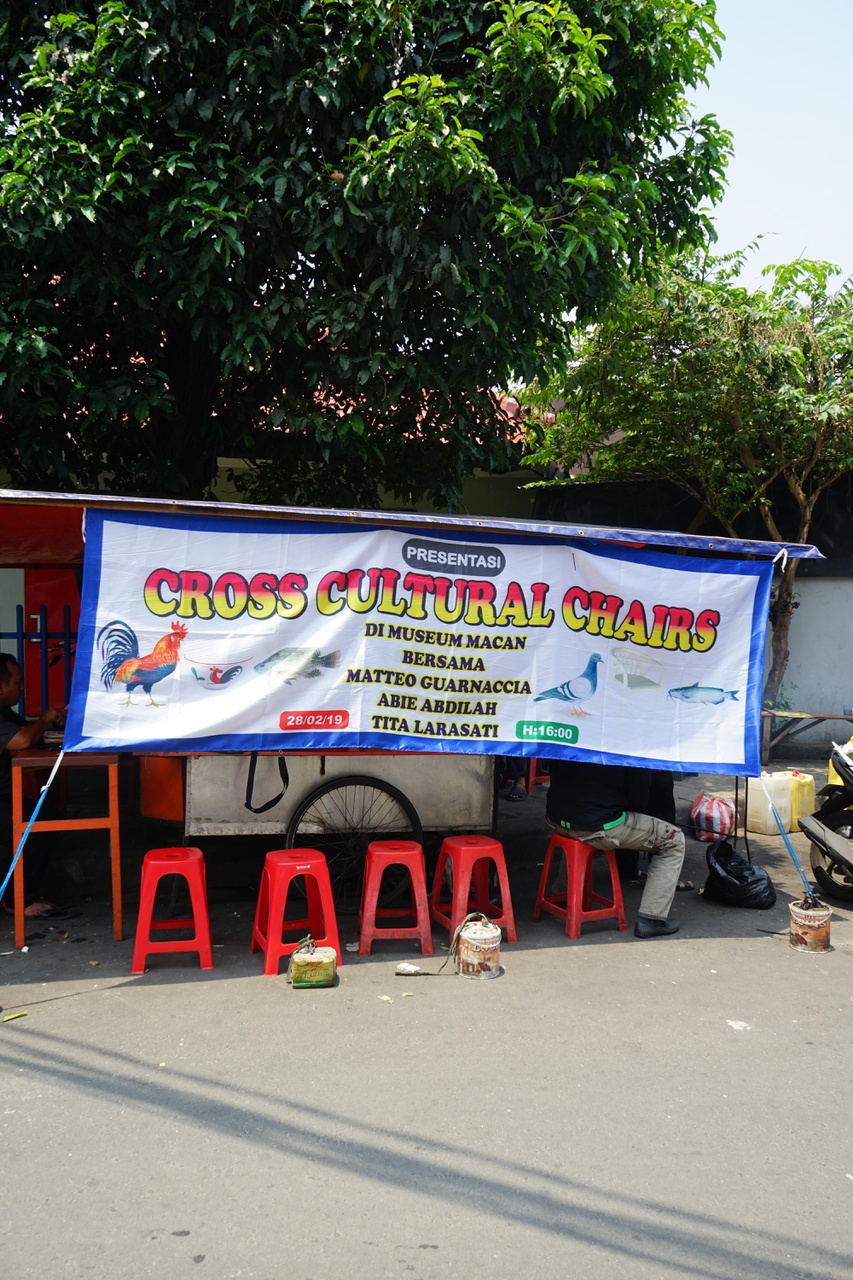
More chairs in Centraal Museum
Centraal Museum has the largest selection of Gerrit Rietveld's chairs in its collection.
From September 2023, the museum will host a special exhibition on special chairs, entitled 'Statement Chairs'. The Cross Cultural Chairs will also be exhibited here.
The end result: the 8 chairs from the Cross Cultural Chairs project.
